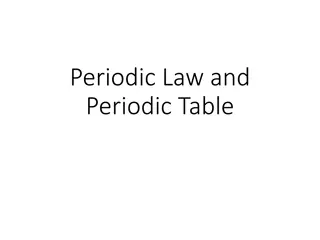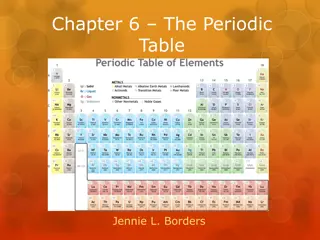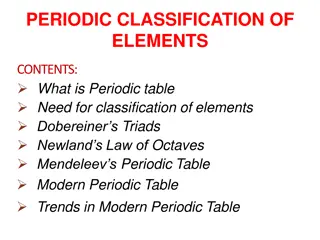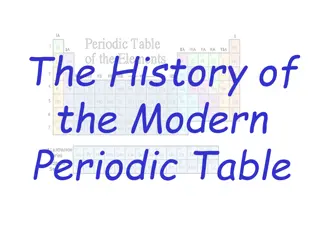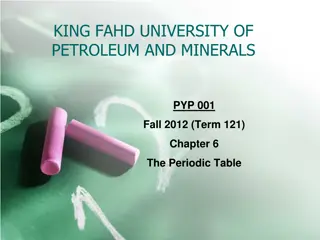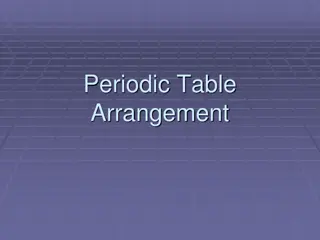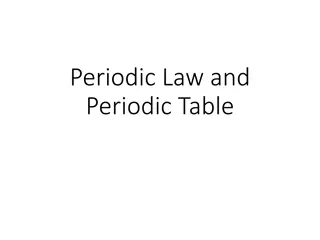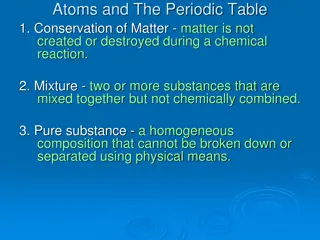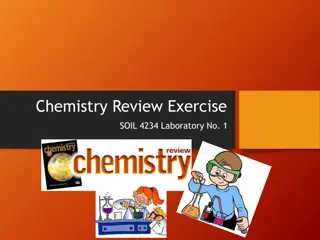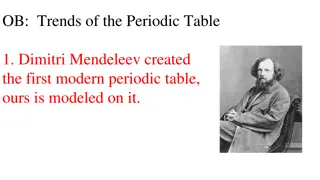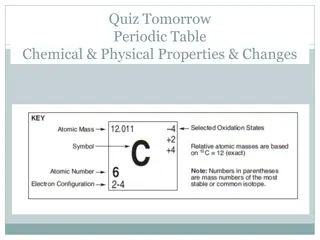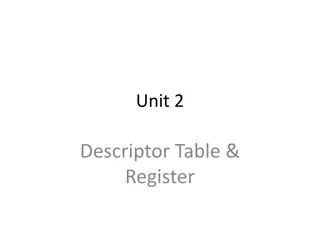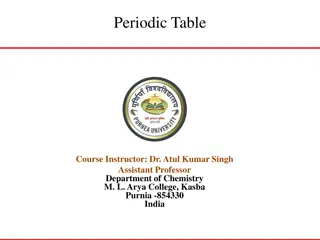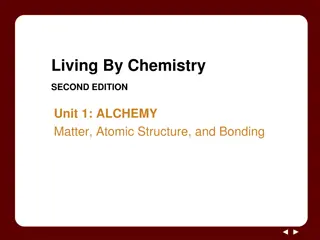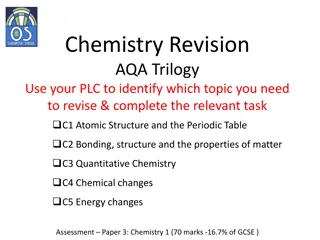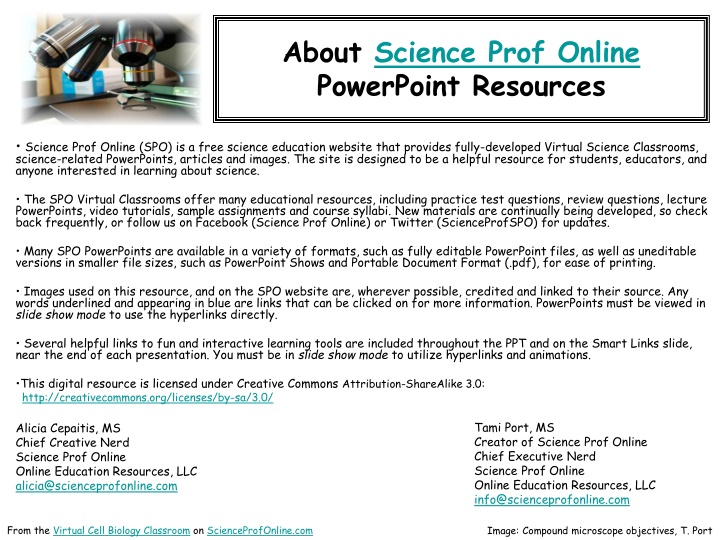
Free Science Education Website - Science Prof Online PowerPoint Resources
"Science Prof Online (SPO) is a free science education website offering Virtual Science Classrooms, science-related PowerPoints, articles, and images. Explore fully-developed educational resources including practice test questions, review materials, and interactive tools. Stay updated with new content and engage with the science community on Facebook and Twitter. Access educational materials under Creative Commons license for enhanced learning experiences."
Download Presentation

Please find below an Image/Link to download the presentation.
The content on the website is provided AS IS for your information and personal use only. It may not be sold, licensed, or shared on other websites without obtaining consent from the author. If you encounter any issues during the download, it is possible that the publisher has removed the file from their server.
You are allowed to download the files provided on this website for personal or commercial use, subject to the condition that they are used lawfully. All files are the property of their respective owners.
The content on the website is provided AS IS for your information and personal use only. It may not be sold, licensed, or shared on other websites without obtaining consent from the author.
E N D
Presentation Transcript
About Science Prof Online PowerPoint Resources Science Prof Online (SPO) is a free science education website that provides fully-developed Virtual Science Classrooms, science-related PowerPoints, articles and images. The site is designed to be a helpful resource for students, educators, and anyone interested in learning about science. The SPO Virtual Classrooms offer many educational resources, including practice test questions, review questions, lecture PowerPoints, video tutorials, sample assignments and course syllabi. New materials are continually being developed, so check back frequently, or follow us on Facebook (Science Prof Online) or Twitter (ScienceProfSPO) for updates. Many SPO PowerPoints are available in a variety of formats, such as fully editable PowerPoint files, as well as uneditable versions in smaller file sizes, such as PowerPoint Shows and Portable Document Format (.pdf), for ease of printing. Images used on this resource, and on the SPO website are, wherever possible, credited and linked to their source. Any words underlined and appearing in blue are links that can be clicked on for more information. PowerPoints must be viewed in slide show mode to use the hyperlinks directly. Several helpful links to fun and interactive learning tools are included throughout the PPT and on the Smart Links slide, near the end of each presentation. You must be in slide show mode to utilize hyperlinks and animations. This digital resource is licensed under Creative Commons Attribution-ShareAlike 3.0: http://creativecommons.org/licenses/by-sa/3.0/ Tami Port, MS Creator of Science Prof Online Chief Executive Nerd Science Prof Online Online Education Resources, LLC info@scienceprofonline.com Alicia Cepaitis, MS Chief Creative Nerd Science Prof Online Online Education Resources, LLC alicia@scienceprofonline.com From the Virtual Cell Biology Classroom on ScienceProfOnline.com Image: Compound microscope objectives, T. Port
Atomic Theory & the Periodic Table For additional resources on this lecture topic, see the Inorganic Chemistry Main Page on SPO. Image: Chemicals in Flasks, J. Sullivan, Wiki
Elements, Atoms & Chemical Symbols Elements:Substances that can t be broken down any further. Atom:The smallest unit of an element. ChemicalSymbol - Begins with one or two letters based on elements name. - Q: What if there is more than one element that starts with the same letter? - Example: Carbon (C), Calcium (Ca), Chlorine (Cl) Follow this link to see Daniel Radcliff (Harry Potter) sing The Element Song . Image: Periodic Table of Elements From the Virtual Biology Classroom on ScienceProfOnline.com Ima
The Structure of an Atom Here are some examples: Atoms are the basis for everything in the universe. Q: What are the three basic parts of an atom? ?= "-" negative charge ?= "+" positive charge ?= neutral (a charge of zero) The thing that makes each element unique is the number of protons, since the number of neutrons and electrons can vary. Protons and neutrons always in the center of atom (the nucleus). Electronsare found orbiting around nucleus in areas called shells. Q: If there is an equal number of electrons and protons in an atom, what is it s charge? NERDY SCIENCE JOKE:A neutron walks into a bar and asks How much for a drink? Q: What does the bartender tell him? Images: Structure of Atom, Chem4Kids Website; Carbon, Universe Today Website From the Virtual Cell Biology Classroom on ScienceProfOnline.com
Protons & Neutrons: Atomic Number, Mass Number & Atomic Mass Atomic Number:The number of protons in the nucleus of an atom. Q: What is the atomic number of carbon? Atomic Mass: (aka atomic weight): The atomic mass of an element is rarely an even number. This happens because of the isotopes. Many elements occur as isotopes. They vary in the # of neutrons they have. Atomic mass is calculated by figuring out the amounts of each type of atoms isotopes there are in the Universe. When an atom has a different number of protons and neutrons, its nucleus becomes unstable. Example: For carbon, there is a lot of C- 12, some C-13, and some C-14 atoms. When you average out all of the masses, you get a number that is a little bit higher than 12 (the weight of a C-12 atom). The average atomic mass for Carbon is actually 12.011. Q: What is the atomic mass of carbon? Mass Number: The number of protons, plus the number of neutrons. Let s listen to part of the Radiolab podcast episode Elements (starting at time 35:00) to learn more about the interesting new use of C-14. Q: How do we know the mass number, if the number of neutrons in an element may vary? Lets look at out Lab Exercise From the Virtual Cell Biology Classroom on ScienceProfOnline.com
Isotopes & Radioactivity Isotope is radioactive if nucleus is unstable. Most isotopes disintegrate spontaneously with the release of energy by processes of nuclear or radioactive decay. When the nucleus changes in structure, energy and/or subatomic particles are given off. Other than radioactivity, isotopes of an element behave similarly: They can participate in molecule / chemical reactions that involve that element. When controlled, radioactive isotopes can be valuable medical tools. (Ex. Gamma camera can produce images of soft tissue when radiopharmaceuticals are injected into or ingested by patient.) 1. Schizophrenic female 2. Female with depression 3. Healthy female From the Virtual Cell Biology Classroom on ScienceProfOnline.com
What about electrons? In a neutral atom, there are the same number of protons (+) and electrons (-). Electrons orbit around the atomic nucleus in shells. The inner shell (lowest energy level) of an atom, closest to the nucleus, can have a maximum of two electrons. The outermost, highest energy shell, is called the valence shell. Eight (8) is the max number of valence electrons for a full valence shell. Number of valence electrons governs an atom s bonding behavior. See Rader s Chem4Kids web page on the Periodic Table. Their explanations are extremely helpful! Atoms are much more stable, or less reactive, with a full valence shell. By moving electrons, the two atoms become linked. This is known as chemical bonding. From the Virtual Cell Biology Classroom on ScienceProfOnline.com Images: Carbon, Universe Today Website
The Periodic Table Dmitri Ivanovich Mendeleev (1834 1907) Russian chemist and inventor. Listen to Radiolab podcast segment on Mendeleev and the periodic table from the episode Yellow Fluff and Other Curious Encounters (starting at 4:30 into the podcast). Formulated Periodic Law. Created his own version of the periodic table of elements, and used it to correct the properties of some already discovered elements and to predict the properties of eight elements that had not been discovered yet! Go to the Chemistry Basics & the Periodic Table Main Page to find a homework assignment based on this podcast. Image: Periodic Table of Elements From the Virtual Biology Classroom on ScienceProfOnline.com
Electrons: How can I determine the number of electron shells? Period ! Electrons in an atom are located in different shells or energy levels. Each ROW of the periodic table is called a Period. Period Rule 1: All of the elements in a Period have the same number of electron shells. For example, every element in the top row (the first period) has one shell for its electrons. All elements in the second row (the second period) have two shells for their electrons. Period Rule 2: As you move down the table, every row adds a shell, up to seven. Period Rule 3: The innermost (closest to the nucleus) shell of all atoms (other than hydrogen) has two electrons. Period Rule 4: The electrons in the outermost shell are called valence electrons. Image: Periodic Table of Elements From the Virtual Biology Classroom on ScienceProfOnline.com
Electrons: How can I determine the number of outer shell electrons? Group! Electrons in the outermost shell are called valence electrons. Each COLUMN of the periodic table is called a Group. Group Rule 1: All elements in the same Group (vertical column) have the same number of valence electrons. Group Rule 2: As you move across the table, (ignoring columns 3 12, the transition elements) every row adds a valence electron, up to 8. Key! If you know the number of shells and valence electrons, you can draw an electron shell diagram for any of the non- transitional elements. Image: Periodic Table of Elements From the Virtual Biology Classroom on ScienceProfOnline.com
Lets listen to The Periodic Table: Rapping the Elements Images: Periodic Table of Elements; Mendeleev, Wiki From the Virtual Cell Biology Classroom on ScienceProfOnline.com
Confused? Here are some links to fun resources that further explain Chemistry: Smart Links Inorganic Chemistry Main Page on the Virtual Cell Biology Classroom of Science Prof Online. What Kind of Bonds Are These? song and slide show by Mark Rosengarten. Chemical Bond Formationanimated science tutorial. Meet the Elements music video by They Might Be Giants. Redox Reactions video lectureby Kahnacademy. Chem4Kids website by Rader. Neutron Dance a so-bad-its-good 80s music video by The Pointer Sisters Want to see me sing the Element Song? (You must be in PPT slideshow view to click on links.) Image: Daniel Radcliff by Joella Marano From the Virtual Cell Biology Classroom on ScienceProfOnline.com
Are you feeling blinded by science? Do yourself a favor. Use the Virtual Cell Biology Classroom (VCBC)! The VCBC is full of resources to help you succeed, including: practice test questions review questions study guides and learning objectives PowerPoints on other topics You can access the VCBC by going to the Science Prof Online website www.ScienceProfOnline.com Images: Blinded With Science album, Thomas Dolby; Endomembrane system, Mariana Ruiz, Wiki

